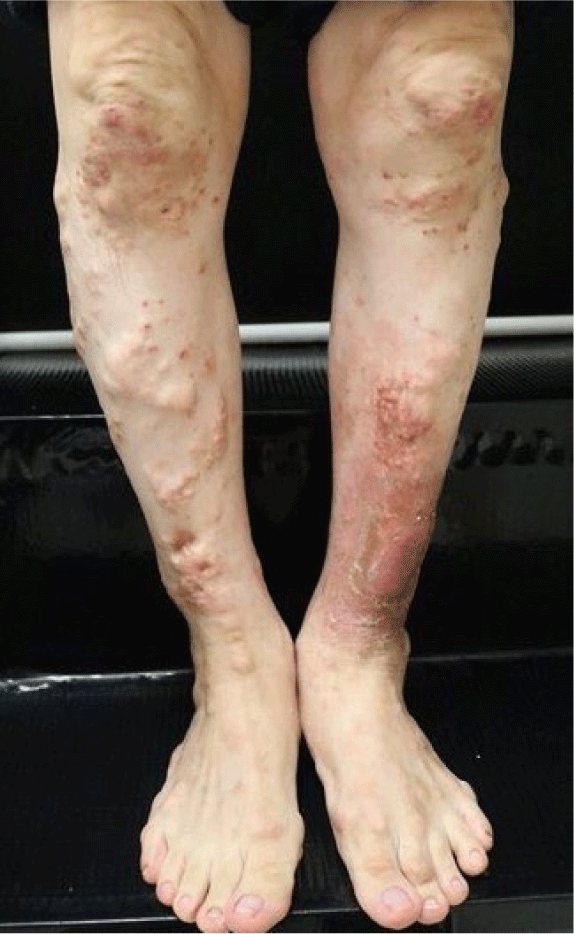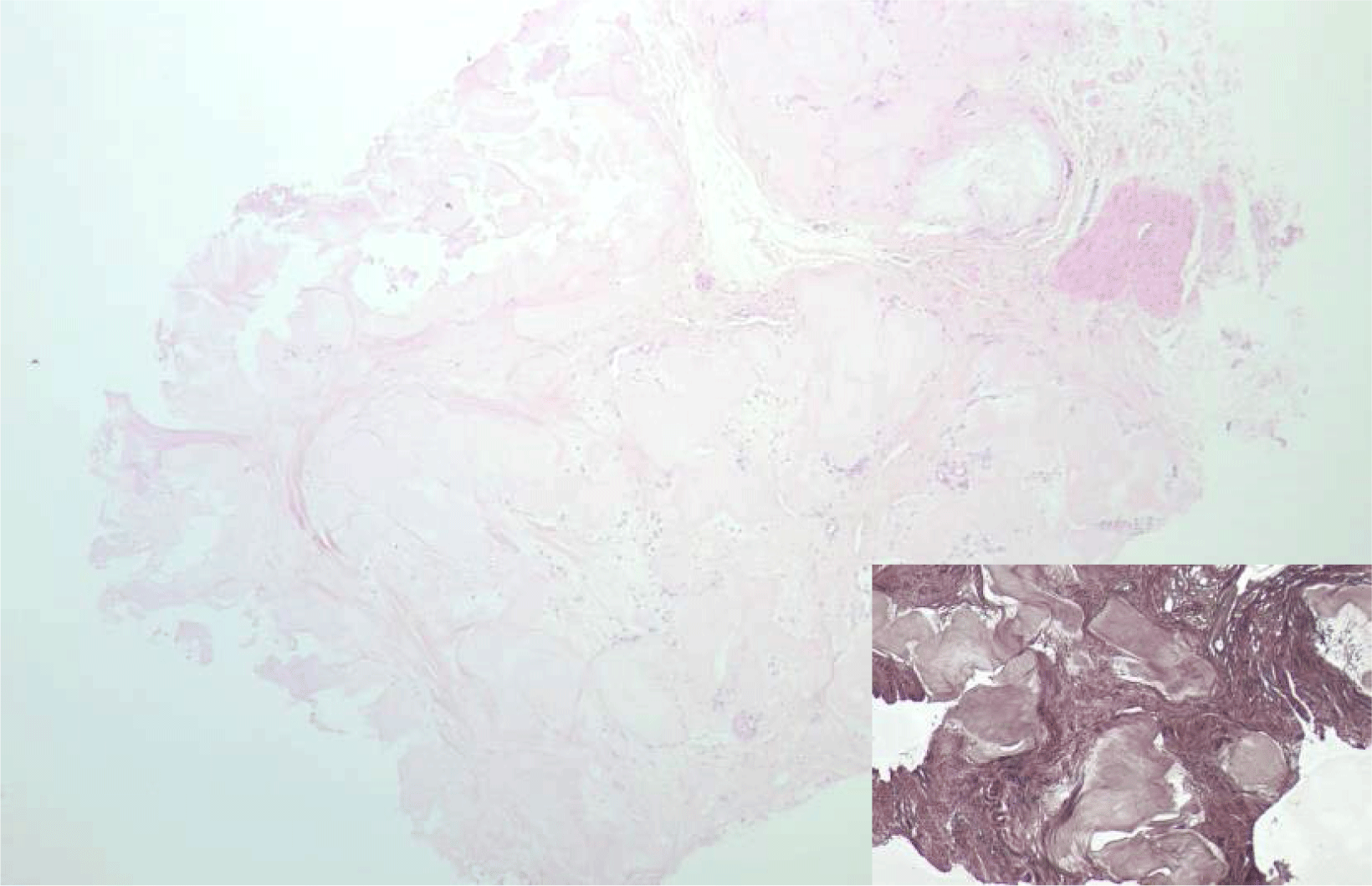A 51-year-old man presented with multiple inflammatory skin lesions on both lower legs that had developed 3 weeks prior. He had a 15-year history of gout and stage 3 chronic kidney disease. Upon physical examination, multiple yellowish, firm papulonodules with evidence of suppuration were noted on his shins, calves, knees, and ankles (Fig. 1). A skin biopsy revealed well-circumscribed deposits of pinkish, amorphous material in the deep dermis, surrounded by histiocytic infiltration and a fibrous reaction. Von Kossa staining did not show any calcium deposition (Fig. 2). The patient was diagnosed with disseminated cutaneous gout, and the skin lesions were treated symptomatically with topical steroids and oral antihistamines.


Gout is a chronic disease characterized by the deposition of monosodium urate (MSU) crystals, which form when urate concentrations are elevated [1]. These MSU crystals can accumulate in joints, bones, and various body tissues, including the skin and soft tissues. The disease can be categorized into four clinical stages: asymptomatic hyperuricemia, acute gout, intercritical gout (the period between gouty attacks), and chronic tophaceous gout [2]. Chronic tophaceous gout typically emerges after a decade or more of recurrent polyarticular gout. Gouty tophi are deposits of MSU crystals in and around joints, as well as in soft tissues. Cutaneous deposition of MSU crystals is commonly observed over joints or on the ears. Disseminated cutaneous gout is an uncommon skin manifestation of gout, characterized by widespread dermal or subcutaneous tophi that develop at extra-articular sites [3].
The gold standard for diagnosing gout is the identification of negatively birefringent, needle-shaped MSU crystals in synovial fluid or tophi. However, the formalin fixation of skin biopsy specimens can result in the dissolution of crystals, which means that MSU deposition typically appears as pink, amorphous material in routine histological examinations. Alcohol fixation is required for the preservation and identification of the urate crystals [4].
